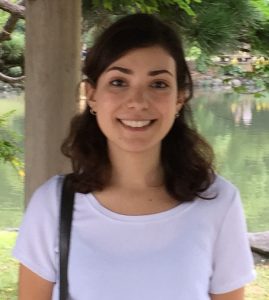Current PhDs & Postdocs
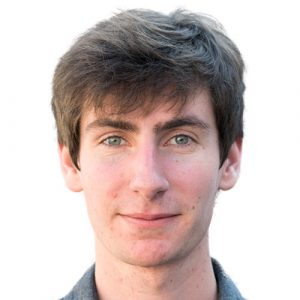
Anatole Geffrault
Hello! I started in 2019 my PhD work at Navier Lab with Philippe Coussot, and I am co-supervised by Hela Bessaies-Bey. I had discovered 3D printing of construction materials a year earlier during an internship in this lab and had loved the idea of being able to print my own house! My PhD aims at better understand how a paste (i.e. a yield stress fluid) flows out of a 3D printer and deposits on a surface, with an approach both experimental and analytical. By understanding what forces are applied on the filament being printed, and knowing the reological properties of the printed material, we should be able to predict the deformations taking place, and thus control the shape of the printed filament. This study, conducted on model materials like clay pastes, will help having successful 3D printings of construction materials such as concrete and raw earth.
Elisa Julien
I joined Philippe Coussot as a PhD student in October 2019 to focus on fluid transfers in wood. My work is co-financed and shared between Navier Laboratory at ENPC and the Experimental Soft Condensed Matter Group at Harvard University.
We intend to better understand water transfers such as imbibition and fluid exchanges between vessels, fibers and cell walls in hardwoods. The challenge is to develop physical models to master mechanisms at work for wood treatments, durability of wooden constructions, etc.
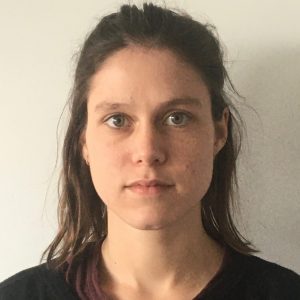
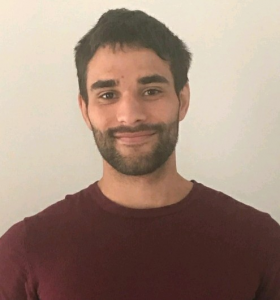
Antoine Aubel
I'm Antoine and I graduated from ENSCI Limoges. My PhD work at Navier Lab with Xavier Chateau and Julie Goyon focuses on rheology of model cement pastes at an early age. The goal of this study is to better understand how chemical additives such as superplasticizers modify colloidal interactions, which control the behavior of fresh cement pastes. To this end, we use a model material (monodisperse silica particles) having controlled properties to prepare pastes with and without superplasticizers. By combining rheometry tests and experiments with laser tweezers, we try to link the rheological properties of these pastes to the contact properties between particles. This fundamental understanding can help to better control the formulation of cementitious pastes used in industrial processes.
Kassem Nejmeh
Hello! I am Kassem Nejmeh I am a civil engineer graduated from the Lebanese University followed by International Mater in Advanced Clay Science at University of Poitiers. Currently, I am continuing my PhD studies at University Gustave Eiffel in collaboration with Saint Gobain Company. The aim of this PhD is to improve the resistance of clay mortars to water, by understanding the mechanisms and finding solutions to improve it. Clay materials present in the city of tomorrow through new techniques of bio-based eco-construction with very low energy footprints. Studies of soil stabilization using natural or synthetic additives have also been performed by some researches to evaluate the durability performance of earth as construction materials. These studies showed the possibility to obtain earth architecture with greater durability against water actions. This increase of earth building durability could help to change the inappropriate and prejudiced perception still existing about earth material.
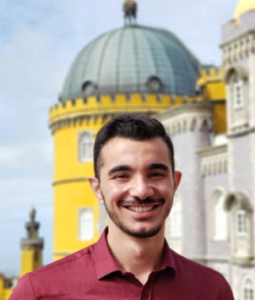
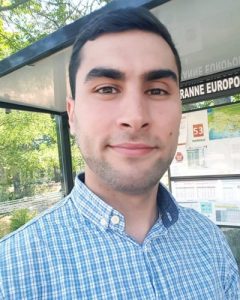
Hicham Dialla
Hi everyone, I am Hicham. After I graduated from the Faculty of Science at the University of Aix-Marseille in Chemical Engineering. I joined Philippe Coussot as a Ph.D. student in October 2019. This Ph. D. is funded by The French Alternative Energies and Atomic Energy Commission. The main purpose of the work is to determine the possibilities of decontamination of cement deeply contaminated by radioelements using the “re-absorbent paste” process. Some studies with model porous systems (see Nidal) have shown that this process is efficient when there is little or no ions adsorption. I focus on understanding how does the process work with cementitious materials. I am looking at the role of the cement reactive sites, and in particular the sorption and desorption reactions. I also study the transport of water (imbibition, drying, fluid exchange with the paste) by using an original technique developed at the Navier Laboratory and which consists of following the evolution of the distribution of NMR relaxation times in the studied sample, giving us more information on how water has penetrated the different pore sizes of the material. In addition, MRI scans of these samples can be used to evaluate the penetration depths of water into the material. My co-supervisors at CEA are Alban Gossard and Jean-Baptiste Champenois, and I work on MRI with Benjamin Maillet in Laboratoire Navier.
Margaux Ceccaldi
Hi! I'm Margaux, I started my PhD in laboratory Navier in october 2020. I work with Olivier Pitois (Navier), Daniel Grande (ICMPE) as co-directors and Vincent Langlois (Navier), Marielle Guéguen (CPDM) and Benjamin Carbonnier (ICMPE) as co-supervisors.
This project focuses on the development of controlled microstructured material from the foaming of aqueous particles suspension which will be bio-calcified via bacteria activity.
Some bacteria produce calcite oxide under the right conditions. We plan to use these bacteria to strengthen the structure of particles in a foam and obtain a more resistant material in the application of insulation or soils (for instance).
The challenge is to find the appropriate formulation of the system foam/particle/bacteria to keep bacteria both alive and working for the consolidation of the structure.
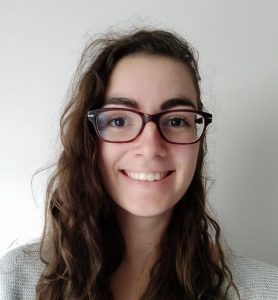
Former PhDs & Postdocs
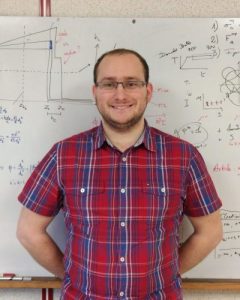
Thibault Lerouge
Hi ! After graduated from Chimie ParisTech, I started in October 2016 my Ph.D. about multifunctional bio-based porous materials for sustainable construction (funded by LabEx MMCD). This project intends to understand the impact of a double porosity on some transfer and mechanical properties of porous media.
Polymers materials with biporous network are designed as a reference system for multi-scale building materials, and elaborated with Daniel Grande, Co-director of Complex Polymer Systems team, (ICMPE Thiais – CNRS), whilst the physical properties research is supervised by Olivier Pitois (Navier) and Ph. Coussot in Laboratoire Navier. Those materials aims to become bio-based with various surface specificities.
Xiaoyan Ma
Hello! I’m Xiaoyan MA. After obtaining my doctor degree in University Paris-Saclay (ENS Paris-Saclay ), I joined Philippe Coussot in October 2020 as a postdoc (funded by LabEx MMCD), in collaboration with Benjamin Maillet, Laurent Brochard and Olivier Pitois.
Following my PhD work, which was on transfer mechanisms in porous media by experimental and numerical approaches, my current subject focused on the characteristics of bio-sourced materials. Such as cellulose, there exist considerable potentials of applications in many fields as biomass, construction and recycling material.
We intended to give a better account of the effective properties and the physical mechanisms of transfers in such materials, which required to perform controlled experiments and got access to important internal characteristics like bound water content. It was essential to understand the moisture transfer phenomena, including drying and imbibition process. The investigation methodology contained several aspects: sorption, evaporation, diffusion by macroscopic operations and NMR/MRI manipulations, mechanical associated measurements, and numerical simulations.
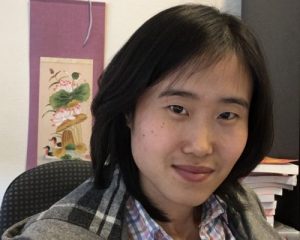
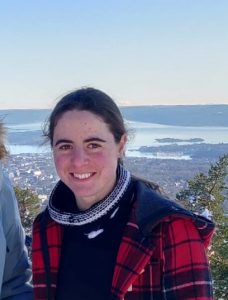
Blandine Feneuil
Hi ! I started my PhD in 2015 with Olivier Pitois and Nicolas Roussel to work on cement foams. I prepared highly controlled samples, with all bubbles of the same size and measured their rheological properties. My main objective was to understand how to optimize cement paste formulation to obtain stable samples, i.e. to avoid bubbles growth and migration.
After my PhD, i decided to keep on working in rheology by doing a postdoc at the University of Oslo. My project deals with drilling fluids; I investigate experimentally particle sedimentation in emulsions.
I am currently a research engineer at SINTEF (Norway).
Aymeric Mouquet
Hello everyone, I’m Aymeric. After I graduated from ENSC Rennes, I started my PhD in November 2015 with Saint-Gobain Recherche and Navier Laboratory. This work focused on studying foam films mechanics with a confined structure because of their low thickness. Using a precise microfluidic foaming method developed in Navier laboratory and based on aqueous polymer dispersion, we managed to generate controlled monodisperse, polydisperse and bidisperse structures. Thanks to the use of X-ray tomography along with mechanical characterization, we quantified the confinement-induced order and highlighted the particular mechanical behaviour of these different structures.
This PhD project was funded by Saint-Gobain Recherche. I had the chance to work with Olivier Pitois, Yacine Khidas and Xavier Chateau in Navier laboratory and with Tamar Saison and Jean-Yvon Faou in Saint-Gobain Recherche.
I am currently a research engineer at Lebon Group.
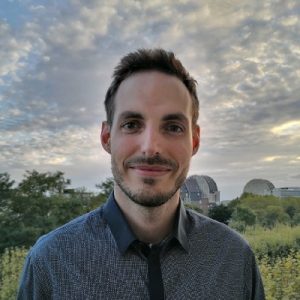
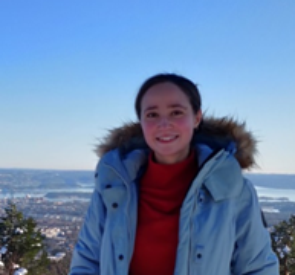
Asmaa Kaddami
Hello! I’m Asmaa Kaddami. I started my PhD with Pr. Olivier Pitois in October 2016, and my co-supervisor was Vincent Langlois. I worked on the elaboration of geopolymer foams with highly controlled morphology and the study of their functional properties. Geopolymers are an exciting class of eco-frienly binders used in various applications such as fire-resistance and thermal and acoustic insulation. Adding bubbles to these materials makes them even more exciting, and that was the first chapter of my work alongside investigating the stability of fresh geopolymer foam before its hardening. As a result, solid monodisperse geopolymer foams with controlled microstructure (pore size and air volume fraction) were produced. This enabled us to study transport properties in these materials, like air permeability, water imbibition and acoustics, and their dependency on foam morphology.
Meng Zhou
Hi, I am Meng ZHOU, I joined Pr. Philippe Coussot’s research group in Nov. 2015 after graduating from EPSCI Paris. Following my PhD defense, I am now working for Saint-Gobain as a R&D engineer based at NIMS (National Institute of Materials Science) in Tsukuba, Japan. My job is to support company’s research centers across the world with NIMS cutting-edge technologies in the materials science field by launching collaboration projects.
My PhD work focused on water transport mechanisms in wood. Water transfers such as imbibition and drying were studied with different methods. The main results of our work showed that the dynamics of water imbibition in wood is significantly different (3 orders of magnitudes slower) from Washburn’s law in a classical porous medium. With the help of advanced imaging techniques such as MRI and 3D tomography, this observation was interpreted by the evolution of wetting properties as a function of bound water content in cell-walls. Similar observations were obtained in a hydrogel-based “artificial” wood supporting our hypothesis. My co-supervisors were Sabine Care, Denis Courtier-Murias, Paméla Faure and Stéphane Rodts.

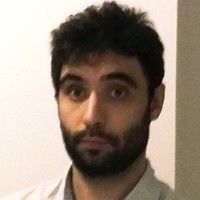
Benoit Laborie
Since 2017, I work in R&D in a start-up coming from the Micromegas team (ENS/IPGG) named SWEETCH ENERGY. The project aim at scaling-up an energy harvesting technology.
From 2015 to 2017, as a postdoc at ENS in Laboratoire de physique statistique and institut Pierre Gilles de Gennes (Micromegas team), I did mostly experimental investigation of various nanofluidics systems for different applications (kidney-on-a-chip, biphasic separation, energy harvesting), membrane fabrication, and electrochemistry.
I did my PhD thesis at ESIEE Paris (ESYCOM) and Laboratoire Navier (rheophysic team) from 2012 to 2015, and I studied the possibility of using microfluidics based technique to produce controlled yield-stress fluid foams. My advisors was Florence Rouyer, Dan Angelescu and Elise Lorenceau. Prior to that, I had a Master's degree in Fluid Dynamics (UPMC).
Yousra Timounay
I am currently a research engineer at Teclis Scientific and my work consists in developing solutions to characterize and study fluid-fluid interfaces, foams and emulsions.
During my postdoc in the Physics department at Syracuse university (2017-2019), I worked on pattern formation in compressed ultrathin elastic sheets confined to a liquid-air interface in a curved environment.
Prior to that, I did my PhD thesis at Laboratoire Navier (2013-2016) where I studied the rheology of liquid-air interfaces, soap films and soap bubbles loaded with solid particles.
